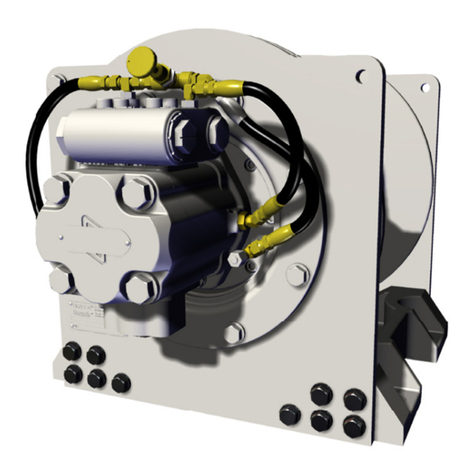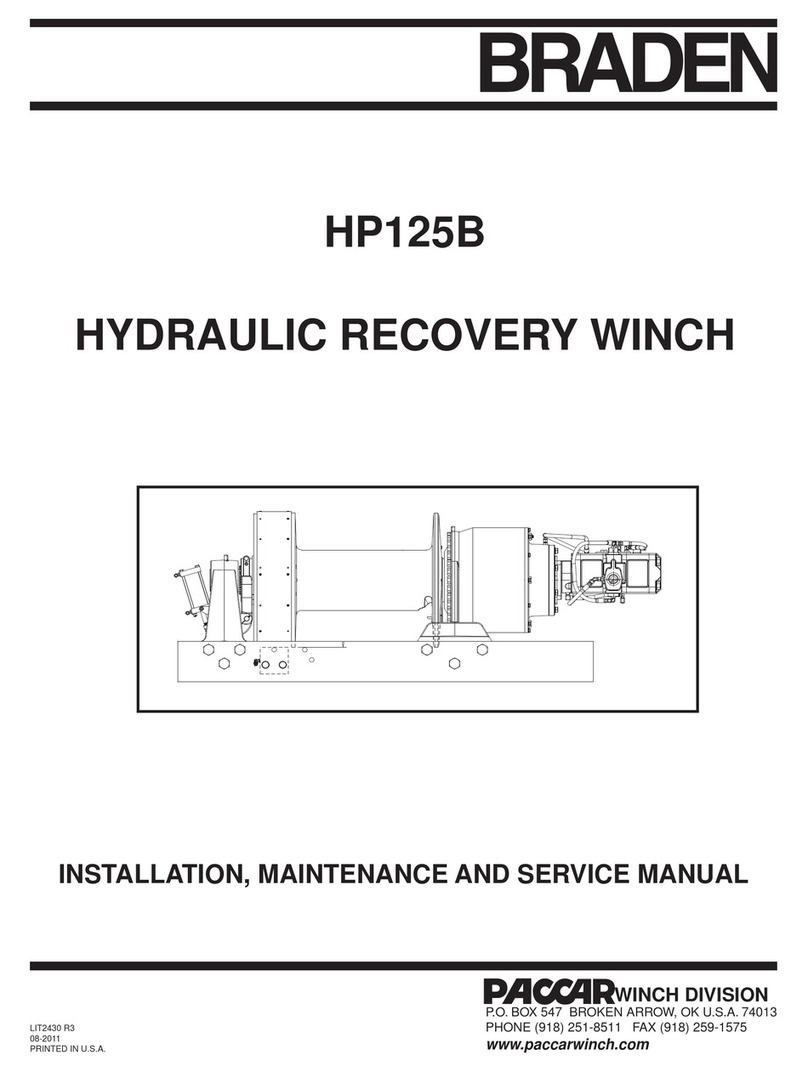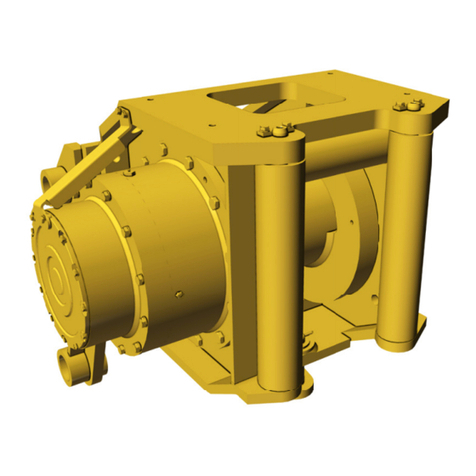
4
CAUTION – is emblem is used to warn against poten-
tial or unsafe practices which COULD result in personal
injury and product or property damage if proper proce-
dures are not followed.
GENERAL SAFETY RECOMMENDATIONS
Safety and informational callouts used in this manual include:
WARNING – is emblem is used to warn against hazards
and unsafe practice which COULD result in severe per-
sonal injury or death if proper procedures are not followed.
!
!
Safety for operators and ground personnel is of prime concern. Always take the necessary precautions to ensure safety to others
as well as yourself. To ensure safety, the prime mover and hoist must be operated with care and concern by the operator for the
equipment and a thorough knowledge of the machine’s performance capabilities. e following recommendations are oered as
a general safety guide. Local rules and regulations will also apply.
1. Be certain equipment (boom, sheave blocks, pendants,
etc.) is either lowered to the ground or blocked securely
before servicing, adjusting, or repairing hoist.
2. Be sure personnel are clear of work area BEFORE operat-
ing hoist.
3. Read all warning and caution tag information provided
for safe operation and service of hoist.
4. Inspect rigging and hoist at the beginning of each work
shi. Defects should be corrected immediately.
5. Keep equipment in good operating condition. Perform
scheduled servicing and adjustments listed in the “Pre-
ventive Maintenance” section of this manual.
6. An equipment warm-up procedure is recommended for
all start-ups and essential at ambient temperatures below
+40°F (4°C). Refer to “Warm-up Procedure” listed in the
“Preventive Maintenance” section of this manual.
7. Operate hoist line speeds to match job conditions.
8. Leather gloves should be used when handling wire rope.
9. Never attempt to handle wire rope when the hook end is
not free. Keep all parts of body and clothing clear of cable
rollers, cable entry area of fairleads and hoist drum.
10. When winding wire rope on the hoist drum, never attempt
to maintain tension by allowing wire rope to slip through
hands. Always use “Hand-Over-Hand” technique.
11. Never use wire rope with broken strands. Replace wire
rope.
12. Do not weld on any part of the hoist.
13. Use recommended hydraulic oil and gear lubricant.
14. Keep hydraulic system clean and free from contamina-
tion at all times.
15. Use correct anchor for wire rope and pocket in drum.
16. Do not use knots to secure or attach wire rope.
17. e BRADEN designed wire rope anchors are capable of
supporting the rated load when installed properly. For
additional safety, ALWAYS maintain a minimum of ve
(5) wraps of wire rope on the drum.
18. Never attempt to clean, oil or perform any maintenance
on a machine with the engine or prime mover running,
unless instructed to do so in this manual.
19. Never operate hoist controls unless you are properly posi-
tioned at the operators station and you are sure personnel
are clear of the work area.
20. Assure that personnel who are responsible for hand sig-
nals are clearly visible and that the signals to be used are
thoroughly understood by everyone.
21. Ground personnel should stay in view of the operator
and clear of hoist drum. Do not allow ground personnel
near hoist line under tension. A safe distance of at least
1-1/2 times the length of the cable should be maintained.
22. Do not exceed the maximum pressure, PSI (kPa), or ow,
GPM (LPM), stated in the hoist specications.
23. Install guarding to prevent personnel from getting any
part of body or clothing caught at a point where the cable
is wrapped onto the drum or drawn through guide roll-
ers.
24. “Deadman” controls, which automatically shut opow-
er to the hoist whenever the operator leaves his station,
should be installed whenever practicable.
25. Never allow anyone to stand under a suspended load.
26. Avoid sudden “shock” loads or attempting to “jerk” load
free. is type of operation may cause heavy loads, in ex-
cess of rated capacity, which may result in failure of cable
and hoist.


































